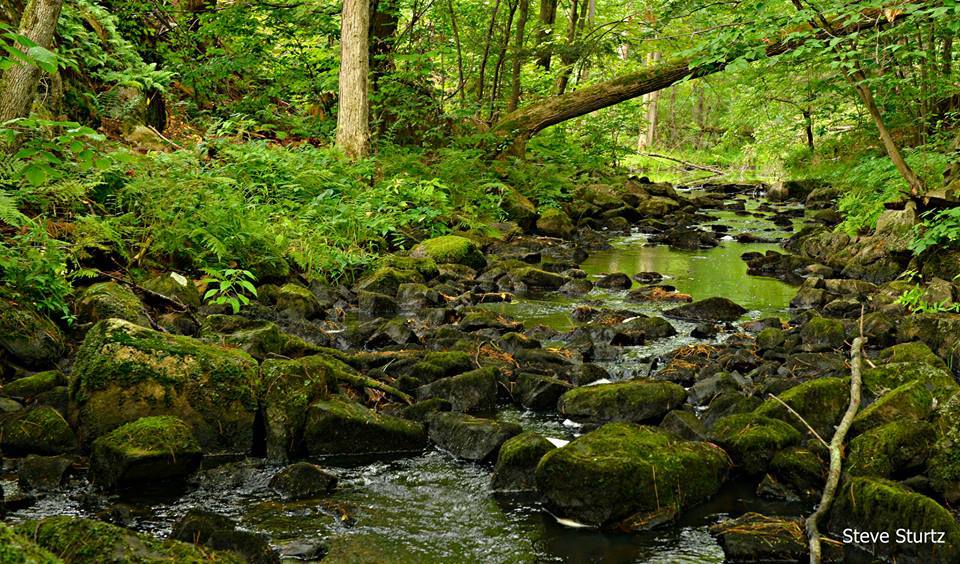Thousand Islands Land Trust
Why Bird Conservation?
Located within the Atlantic Flyway, the Thousand Islands Land Trust (TILT) is working to conserve lands for migratory birds, full-time residents, and future generations of human visitors. Birds have been at the heart of TILT’s mission because of the uniqueness of the area. The archipelago of islands and associated wetlands surrounding the St. Lawrence River and its outlet to the Great Lakes in northern New York make the area significant for conservation of birds and bird habitats. As Sarah Walsh, past Director of Land Conservation, explained, the area is important for conservation; it is one of the last strongholds that will ensure the continuation of certain important bird species. With birding becoming a growing recreational pursuit, birds are a great way to connect people to the land trust.
Spotlight Resource: Building a Collaborative
In order to protect landscapes for the birds, the Thousand Islands Land Trust partnered with the Indian River Lakes Conservancy, Cornell Lab of Ornithology, Audubon New York, New York State Department of Conservation, and Clarkson University. This collaboration, called the St. Lawrence Valley Partnership for Golden-winged Warblers was invaluable to the Golden-winged Warbler, the focus of the project. Each organization brought different assets to the table, with volunteers, technical expertise, resources, information, and monitoring task forces all coming together to make this project a success. With funding from the Land Trust Alliance as well as other organizations and donors, the partnership empowered TILT to accomplish what it would not have been able to achieve on its own, says Walsh. With manpower from volunteers and staff alike, the land trusts restored critical habitat for the declining Golden-winged Warbler. Cornell Lab of Ornithology and Audubon staff created management plans to guide restoration efforts and surveyed birds at each site in order to monitor the effectiveness of the restoration. The end result is three demonstration areas that show by example how to successfully manage land for Golden-winged Warblers and other shrubland species.
Our Organization’s Outreach
The collaboration has gone a long way and helped the partner organizations make the most of their limited resources, Walsh says. In addition to having positive impacts on conservation, the program is serving as a springboard for community and professional outreach programs. The Thousand Islands Land Trust and project partners have developed outreach signs to place at each of the three demonstration sites so that people can understand the story of the Golden-winged Warbler and see how many different organizations are invested in their perseverance. In collaboration with Audubon and the Cornell Lab of Ornithology, training seminars and workshops were conducted in fall 2015 to encourage land managers and conservation professionals to implement habitat management practices and manage shrublands on their own land. Our website details more of the St. Lawrence Valley Partnership’s outreach efforts.
What’s Next For Us?

The Thousand Islands Land Trust will be recruiting birdwatchers and volunteers to use eBird, an online program into which participants enter bird observations. The bird observations will provide important information to TILT about the condition of their properties, locations that are most important to birds, and the best management strategies to implement. In addition, the hope is eBird will help connect people to nature and TILT preserves. TILT has listed the Otter Creek Preserve as a birding hotspot on eBird in order to generate more interest. Future projects include training of volunteers in order to introduce them to eBird and to get them to start collecting data.
Advice for Other Land Trusts
Walsh advises other small land trusts to “get creative, as partnerships empower to get the work done.” For example, the Cornell Lab of Ornithology was an important asset to this collaboration providing resources and expertise, enabling conservation work to be done on the ground. For other land trusts, a local bird conservation organization might be able to play a similar role. There is strength in numbers and as Walsh shares, “being part of this group of collaborative organizations allows for a strong support system, as we’re all working towards the same goal of bird conservation.”
Note: The Cornell Lab is proud to have the Thousand Islands Land Trust as a partner organization of our Land Trust Initiative. We are grateful for their contributions to our work with land trusts.
Hero image: Private lands can be managed to create more suitable bird habitats for critically endangered and shrubland bird species; picture above shows tree thinning at Otter Creek Preserve by the Thousand Islands Land Trust. Photo credit: Andy Hinickle
Sign up to receive our eNews and stay connected
The Land Trust Bird Conservation Initiative will send you updates about funding opportunities and ways to work with partners to protect birds and further your land conservation goals. We’ll highlight resources to assist with bird conservation on private lands, showcase tools and data visualizations to assist with planning and stewardship, and share success stories from the field.
